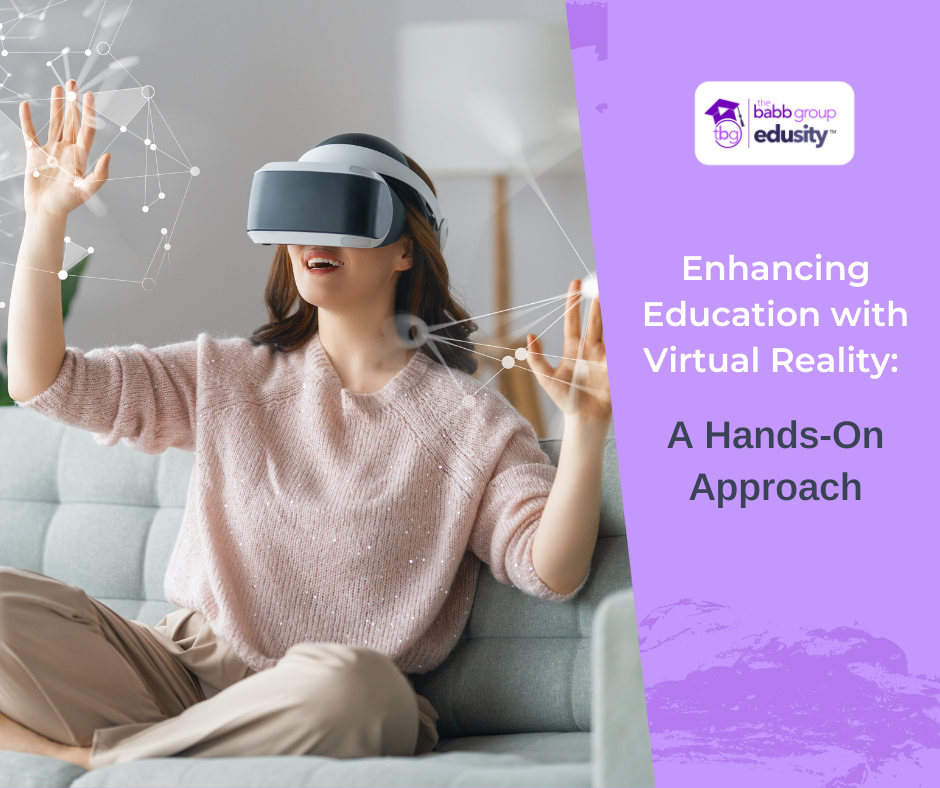Students and job seekers need more than traditional methods to explore career paths and develop essential skills. Enter virtual reality (VR), a powerful tool that offers immersive experiences and bridges the gap between theory and practice. We recently talked to Brad Benedict, Head of Workforce Development at Transfr, about how VR can revolutionize career exploration and workforce development in education.
Watch the full interview with Brad Benedict.
Learning by Doing: A Tangible Experience
Benedict emphasizes the importance of hands-on learning even when students or potential employees are just starting to learn about a new tool or skill. Traditional methods like videos, guest speakers, pamphlets, and brochures provide valuable information but often lack the depth needed to build confidence in aspiring professionals. VR changes the game by allowing learners to virtually step into different career scenarios.
Benefits of VR for Career Exploration:
- Realistic Simulations: VR provides lifelike simulations of various professions. Students can experience what it’s like to be an EMT, work in manufacturing, or construct buildings. This firsthand encounter eliminates guesswork and fosters informed decision-making.
- Confidence Building: By interacting with virtual environments, learners gain confidence. They can practice skills, troubleshoot challenges, and explore their interests without real-world consequences. This confidence translates into better-prepared job seekers.
- Personalized Exploration: VR adapts to individual learning styles. Whether through visual cues, audio instructions, or hands-on tasks, learners receive a personalized experience. This flexibility ensures engagement and retention.
Split Classrooms: Bridging the Gap
Benedict highlights the challenge of instructor bandwidth in traditional classrooms. With limited resources, personalized instruction becomes difficult. Imagine an automotive technology class where students crowd around a car to learn practical skills. Those in the back miss out on immersion. VR solves this problem by offering one-to-one personalized instruction. In a split classroom model, half the students work with the instructor on the car, while the other half engage in the same lesson through VR, guided by a digital coach.
Aligning VR with Learning Objectives
To harness VR effectively, define clear outcomes. Benedict advises against treating VR as another shiny tool. Instead, be tactical in implementation. Consider using VR as a recruiting tool for academic programs. Whether at high schools or higher education institutions, VR creates community interest. It’s portable, making it ideal for job fairs and online outreach. Ultimately, VR helps prospective students understand program offerings and find the right fit.
Virtual reality isn’t just a buzzword; it’s a transformative tool for education. By immersing students in realistic scenarios and catering to diverse learning styles, VR prepares them for the workforce with confidence and competence. As educators, let’s embrace this technology and empower the next generation of professionals.
Remember: In the world of VR, learning isn’t passive—it’s an adventure to explore!
You might also like:
Angela Britcher
Latest posts by Angela Britcher (see all)
- Enhancing First-Year Experiences in Higher Education - August 1, 2024
- Enhancing Education with Virtual Reality: A Hands-On Approach - June 27, 2024
- Higher Education Trends: Insights from Our COO, Sheila Fry - June 13, 2024
